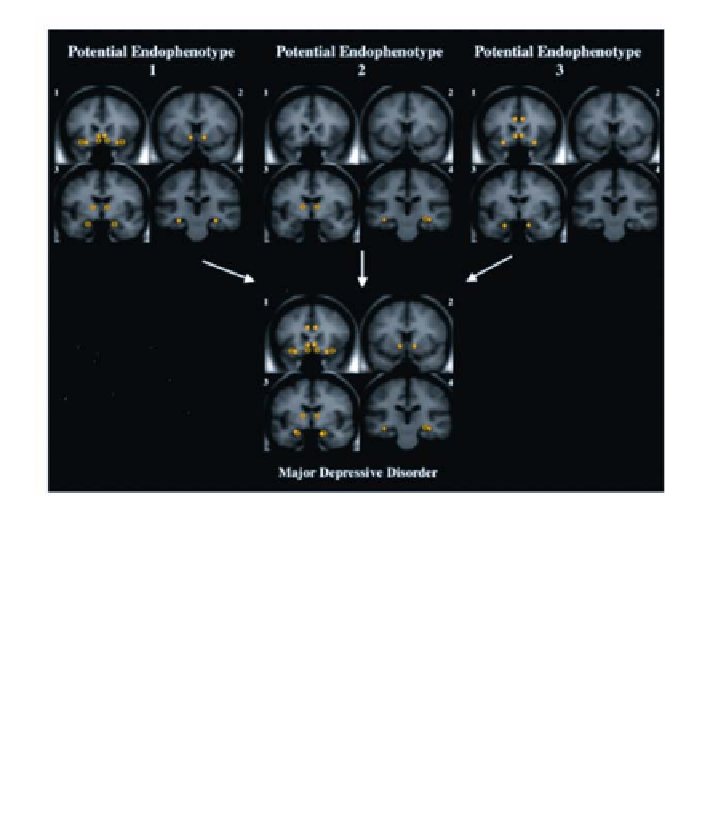Biomedical Engineering Reference
In-Depth Information
Figure 13
. The groupings of structural images in gray tone are the same as in Figure 12, and display
changes in the structure, function, or morphology of subcortical gray matter and paralimbic cortices for
three putative categories of depression. "Putative endophenotype variation a" grouped studies focused
on recurrent depression with strong familiality. "Putative endophenotype variation b" grouped studies of
primary depression with and without obsessive-compulsive features and without manifested familial
connections. "Putative endophenotype variation c" grouped studies of primary and secondary depres-
sion in older subjects who were studied postmortem (see text for references). Regions with differences
in resting brain metabolism from healthy baselines are noted with an "O" symbol. Regions with differ-
ences in regional morphology or volume from healthy baselines are noted with a diamond. These stud-
ies are suggestive of the potential for circuitry-based endophenotypes for major depressive disorder, and
point to a strong focus on the generalized reward/aversion system for circuitry-based alterations charac-
terizing major depressive disorder. Such circuitry-based subtypes could facilitate treatment planning in
the future. Figure adapted with permission from Breiter and Gasic (32).
have circuitry-based phenotypes, on the basis of evidence that subtyping of de-
pressed patients appears to be important for reducing variability in the patterns
of regional activity observed with functional imaging (81,83). At least three pu-
tative phenotypes are observed when findings are grouped from structural and
functional imaging studies of depression with large cohort sizes or replicated
findings (Figure 13). Alluding to the existence of circuit-based phenotypes,
which may be heritable markers or endophenotypes, a number of neuroimaging
studies comparing individuals with neuropsychiatric disorders to unaffected
controls have documented qualitative differences (presence or absence of a re-
gional signal), and quantitative differences (numeric alterations in the mean or
median signal) (36,43,82,93,115,162,163). The presence of circuitry-based

